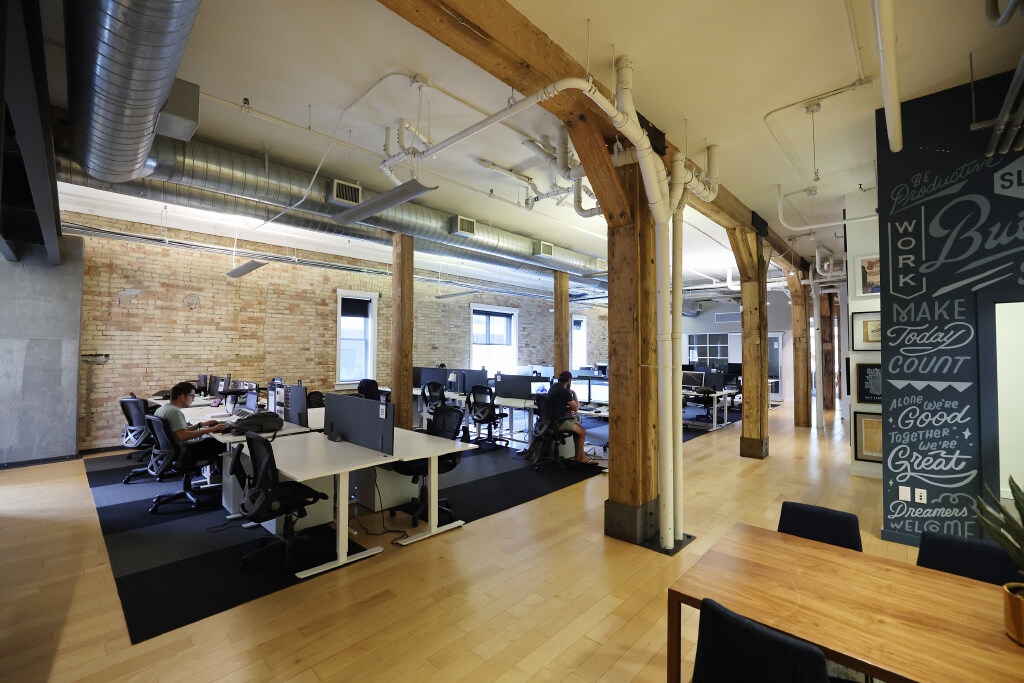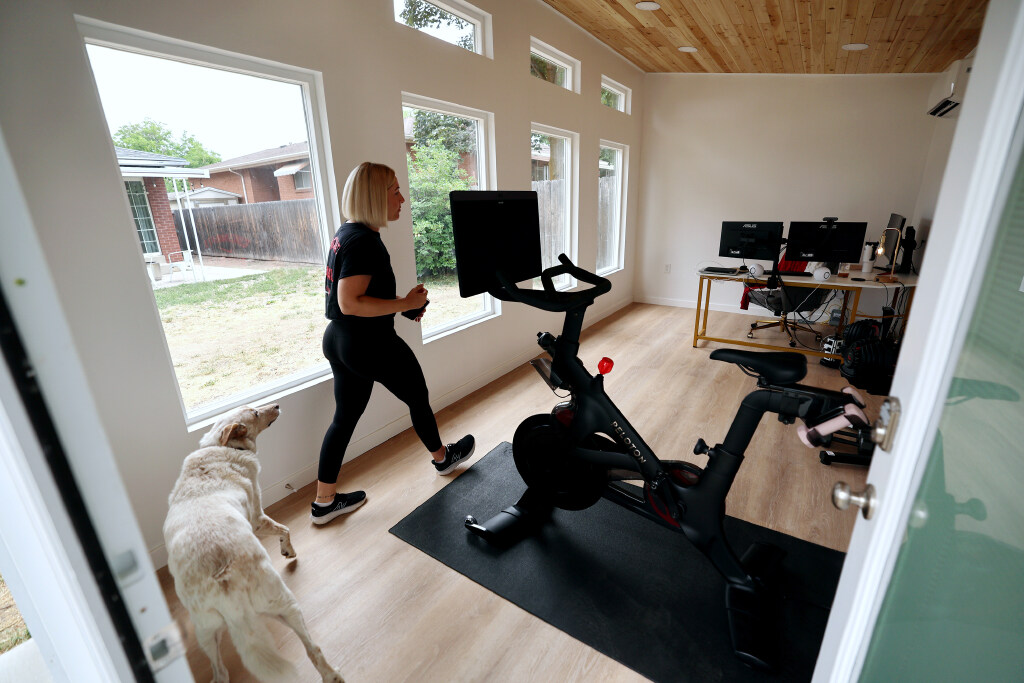
The post-pandemic office space industry affects you more than you think
This story appears in the 2024 Advisor, a publication sponsored by Colliers Utah.
As COVID-19 lockdowns eased with the distribution of vaccines, employers around the world began to discuss bringing workers back to in-person office days—but there was resistance. Early analysis showed digital connectivity had changed work-life balance expectations while productivity, concentration and hours worked had actually increased.
The work-from-home and hybrid work models had solidified enough that Stanford University’s Institute for Economic Policy Research referred to the employees refusing to return to offices full-time as “the Great Resistance” in July 2022. A survey of 5,000 workers found that in cases where employers requested five days of in-person work, only 48 percent of employees complied.
Carla Meyer, a senior director at Colliers Dallas, says there are now three main categories company real estate plans can fall into: “hybrid,” in which employees mix their time between home and office roles; “flexible,” in which there is openness regarding the hours employees work; and “agile,” in which workers can participate in work projects from anywhere.
“We’re seeing a much higher demand for these flexible and hybrid workspaces from our corporate users,” notes Mike Kay, vice chairman at Colliers Dallas. “We’re seeing corporations be much more agile in how they’re using real estate; they’re not signing long-term leases.”
Needing an in-office community with at-home productivity
A year and a half after the “Great Resistance,” office culture has shifted again as employers are making a different argument in favor of full-time office work: strengthening workplace culture and community. According to a ResumeBuilder.com survey of 1,000 companies, 90 percent are planning to require their workers to return to full-time office work by the end of this year.
More in-person work days will cause a major shift in the office space market, which had been dramatically scaled back during the pandemic as physical needs atrophied. But as more companies implement return policies, office spaces will become crucial again.
“Sixty-four percent of respondents say their company currently has a physical workspace, 20 percent plan to by the end of 2024, 11 percent plan to in 2025 or later, and just 4 percent never plan to have a physical workspace,” the ResumeBuilder.com survey found.

Kay says the model has helped create a need for a “hub and spokes” model of office spaces, where companies can have one main check-in space that is filled with important amenities but also more flexible and satellite options to accommodate remote and hybrid workers. Meyer adds that as a result of these shifts, companies are rethinking their needs and opting for short leases around six months instead of traditional 5- to 10-year leases.
“They’re trying to see how much space they need and how many people come into the office,” Meyer says. “These companies are really trying to experiment, and that’s one of the benefits of these providers.”
As time allowed for better insights into how the pandemic’s work changes impacted professional output, Forbes reported that hybrid work models had been the most effective for productivity, increasing in comparison to full-time office work, while fully remote work options had decreased productivity slightly.
“Hybrid employees gain back roughly two or three hours each week due to reduced commuting—with a portion of this time being allocated to more work hours. They also tend to be more productive during their remote work days owing to fewer interruptions and quieter home-based working environments,” the October 2023 Forbes story stated.
However, many reports across the business world cite employers’ “emotional” response to the problem, citing their desire to physically see their workers’ productivity. In a September 2023 article, management consultant Dan Kaplan of Korn Ferry told CNBC the desire for a total return to office work wasn’t based entirely on intellectual reasons.
“There’s the popular argument that people are less connected to their company and to their peers without the office, which is bad news for employee engagement and retention,” Kaplan said in the article. “It’s easier for executives to hold on to the old notion that people are really working if they can see them down the hall. … It’s almost too hard for some leaders to comprehend a world where that option doesn’t exist or to consider a radical new approach.”
Medical coworking as a shifting model
One key area of interest for real estate sectors will be ideas like a shared medical space.
“A noteworthy trend within this transformation is the rise of medical coworking spaces. These innovative environments are reshaping the way medical professionals work, collaborate and deliver care,” wrote Shawn Janus, Colliers’ national director for health care, in a blog post last September.
The article credited this shift within the medical community to enhanced technology and changing patient expectations. Through medical coworking spaces, doctors and clinicians could rent spaces with more flexible options to see their patients. Janus pointed to already existing programs such as ShareMD Suites to demonstrate that the idea is already in action.
“The cost of establishing and maintaining a traditional medical practice can be prohibitive, particularly for independent practitioners,” Janus wrote. “Medical coworking presents a cost-effective solution, allowing users to share overhead expenses and administrative burdens.”

“By becoming more flexible and adaptable in everything from the makeup of neighborhoods to the design of buildings—in essence, becoming more ‘hybrid’ themselves—superstar cities can not only adapt but thrive.”
Innovating office space to avoid a crisis
All this sets up a significant shift in commercial real estate and workplace culture in 2024: As employers become more emboldened to require return-to-office orders, the market will adapt to shifting needs.
For the past several years, remote work dramatically reduced the commercial office rental market. A McKinsey Global Institute analysis found that in just nine megacities across the globe, commercial rentals were set to lose $800 billion by 2030.
Colliers Utah Chairman Brandon Fugal notes the changing market has allowed many companies to create shared office spaces.
“The secular shift observed with office utilization and trends has renewed interest in not only coworking and shared office solutions but also a flight to quality, with an emphasis on Class A fully amenitized space,” Fugal says. “Shared office space offering amenities and collaborative ecosystems appear to be on the rise, as well as an emphasis on quality of workspace and locational advantages for recruitment.”
During the most extreme lockdowns and hybrid work phases, the market adapted. Adaptation was strong in those days: Restaurants converted themselves into boutique markets seeking to sell packaged goods; chefs became food creators and opted to remain influencers after lockdowns ended; universities and schools embraced online learning; and robots replaced some human jobs like manufacturing.
Commercial real estate underwent one of the more extreme transitions, with the entire planet required to stay home. McKinsey’s 2023 report on the decline of the commercial rental market noted an urgent issue—the change wouldn’t impact just this one industry. Retail and housing in major cities would face trying times. To weather the hybrid era, companies began to lease out some of their office space or downsize, opting for smaller numbers of desks.
To make the pitch for workers to return to more time in the office, CNN Business notes companies will need to clearly define their reasons for cultivating an in-person culture. According to reporter Jeanne Sahadi, the battle is that even before the pandemic, a loose requirement of in-person days actually helped spark creativity and innovation in workers.
Sahadi referenced a Gensler Research Institute report that found a sweet spot to be three days per week in the office.
“Innovators who spent some time working away from the office reported higher job satisfaction, more meaning, and better managerial relationships. For innovators, the office is just one of the many places where work happens,” Sahadi quoted the report as saying.
Either way, as the commercial real estate sector adjusts to more in-person work in 2024, the changes may be industry-specific. According to Kaplan in the CNBC article, tech, financial services, and retail will likely spend more on office space in the years to come because they are the largest players in the office rental market.
Even as employers push more concretely for a return to in-person work, experts remain adamant that hybrid work is here to stay. For example, McKinsey’s 2023 report on the commercial real estate market argued that employee expectations for some days out of the office will remain in the years to come.
Despite a gloomy forecast for the market and a more established hybrid work culture, McKinsey found that the possibility of innovation for office spaces and urban design is flourishing under post-pandemic creativity.
“The challenges also provide an opportunity to spur a historic transformation of urban spaces,” the consulting firm’s authors wrote. “By becoming more flexible and adaptable in everything from the makeup of neighborhoods to the design of buildings—in essence, becoming more ‘hybrid’ themselves—superstar cities can not only adapt but thrive.” ![]()





